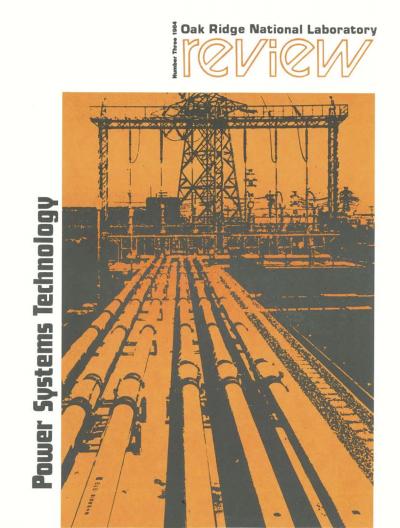ORNL Review v17n3 1984.pdf

- New Agents To Detect Heart Disease. ORNL's Nuclear Medicine Group has designed and developed radioactive agents for safely and more clearly evaluating heart disease and the effectiveness of therapy. These agents include iodine-123-labeled methyl-branched fatty acids. The group has also developed an improved iridium-191m generator to diagnose heart problems in children. The methyl-branched fatty acids will be tested this year in human patients in Boston and Vienna, and the generator has just entered clinical trials in Europe.
- The Advanced Toroidal Facility: Improving Fusion's Chances . Because further improvements in doughnut-shaped, or toroidal, fusion devices are desirable, ORNL has designed an Advanced Toroidol Facility (ATF). An optimized version of a stellarator (which differs from a tokamak in that it lacks a plasma current to magnetically confine the fusion fuel), the ATF will be built in Oak Ridge and is scheduled to begin operation in late 1986.
- SPECIAL SECTION: Technology for Efficient Power Systems. ORNL is managing the Department of Energy program for developing and testing technologies designed to make electric power systems safer, more reliable, and more efficient. ORNL's interdisciplinary staff of experts has taken on a variety of projects, including planning an automated distribution experiment for Athens, Tennessee, and developing a fiber optics measurement device, low-loss steel alloy, and new insulating materials for use in transformers.
- The Oak Ridge Environment: A Resource To Be Managed. A five-year plan for managing the resources of the Oak Ridge Reservation of the Department of Energy has been developed at ORNL The plan, which is described in the third in a series of articles on ORNL and the environment, deals with both natural and technical resources and provides the means for resolving resource issues such as endangered plant species, contaminated sewage sludge, and the fast-growing deer population.
Departments
- Books. William S. Lyon reviews two books about success in science.
- Technical Capsules. Diamonds Can Measure Very Short Times; New Way To Identify Environmental Carcinogens; Quest for Quicksilver in Local Lakes
- Awards and Appointments
- Take a Number

